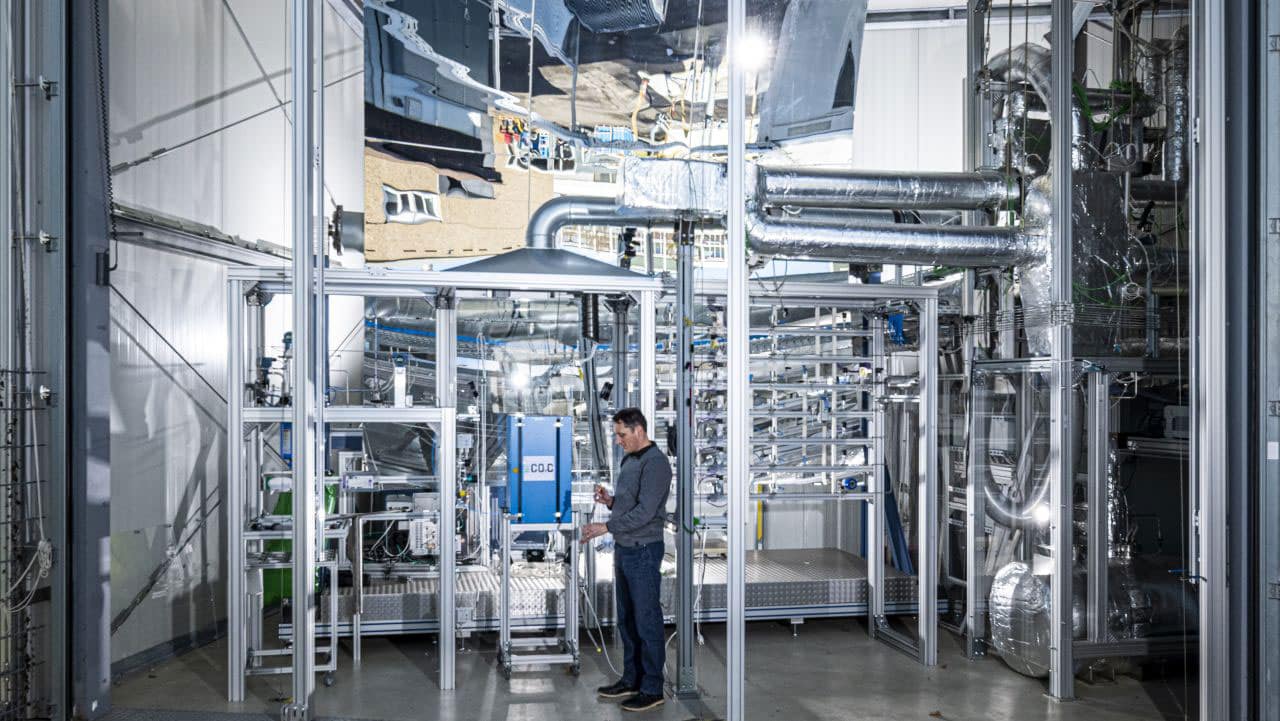
In the debate about climate change and the causes of global warming, emissions from the combustion of fossil fuels, such as in power plants or industrial production processes, are at the top of the list of polluters. Carbon dioxide (CO2) constitutes the lion’s share of the so-called greenhouse effect. In order to slow down the associated climate changes and avert the resulting climate crisis, science and industry are already pulling out several stops: on the one hand, the avoidance and reduction of emissions, and on the other hand, the storage of carbon dioxide in the ground.
In the new facility at Karlsruher Institute for Technology (KIT) in Germany, a globally unique approach is developed: Extracting excess CO2 from the air and converting it into solid carbon as a usable raw material for industrial applications. The process developed in the NECOC (Negative Carbon Dioxide to Carbon) research project, together with industrial partners, combines negative emissions with the production of high-tech raw materials.
The Intergovernmental Panel on Climate Change (IPCC) suggests removing and permanently storing already emitted CO2 in the atmosphere to meet the 1.5-degree target set for a rise in temperature by 2030. “We have to find completely new technological solutions if we want to keep up industrial production,” says Dr. Benjamin Dietrich of the KIT Institute of Thermal Process Engineering (TVT). “This includes the industrial carbon supply. Carbon is needed for the production of batteries, building materials, colors, and in the agricultural sector. So far, it comes largely from fossil sources.”
In the research project NECOC, coordinated by Dietrich, the associated partners KIT, INERATEC, and Climeworks develop a process to convert CO2 from the atmosphere into carbon. “If this carbon remains permanently bound, we successfully combine negative emission with a component of the post-fossil resource supply as part of a future carbon management strategy. This represents a double contribution to a sustainable future,” Dietrich explains.
In continuous operation, the project’s first-phase installation removes almost two kilograms of CO2 from the ambient air every day and uses it to produce 0.5 kilograms of solid carbon. The NECOC process combines three process steps: In the first step, the CO2 is separated from the ambient air (Direct Air Capture) with the help of an adsorber.
In the second step, the CO2 is moved to a micro-structured reactor, where it reacts with sustainably produced hydrogen from a connected electrolyzer. Its components, carbon and oxygen form new bonds, and the CO2 now becomes methane and water.
The water flows back into the electrolyzer, and the methane with its carbon component continues to flow into a reactor with liquid tin. In the third step of the process, the pyrolysis reaction takes place in rising bubbles, and the methane molecules are split. This produces hydrogen, which is used again to separate CO2 in the process.
The only remaining part is carbon, which floats on the tin as a micro-granular that can be taken off mechanically on a regular basis. Changing process parameters like the temperature level allows the production of different carbon modifications like graphite, carbon black, or even graphene.
The start of the test installation is an important milestone for the NECOC project, as well as the end of the first funding phase. In the second phase, the process is to be scaled up and optimized for expansion. “We are planning to make the procedure more energy-efficient by improving the energy recovery from the process heat,” states project director Dr. Leonid Stoppel from the Karlsruhe Liquid Metal Laboratory (KALLA). “We are also looking into an integration of high-temperature heat storages and direct solar heating.”
Furthermore, the integration of CO2 point sources, novel approaches to the extraction of CO2 from the air, and the influence of trace components and impurities in the process network on the carbon quality are to be investigated.
New facility at KIT produces high-tech resource carbon from air
Source: Tambay News

0 Comments